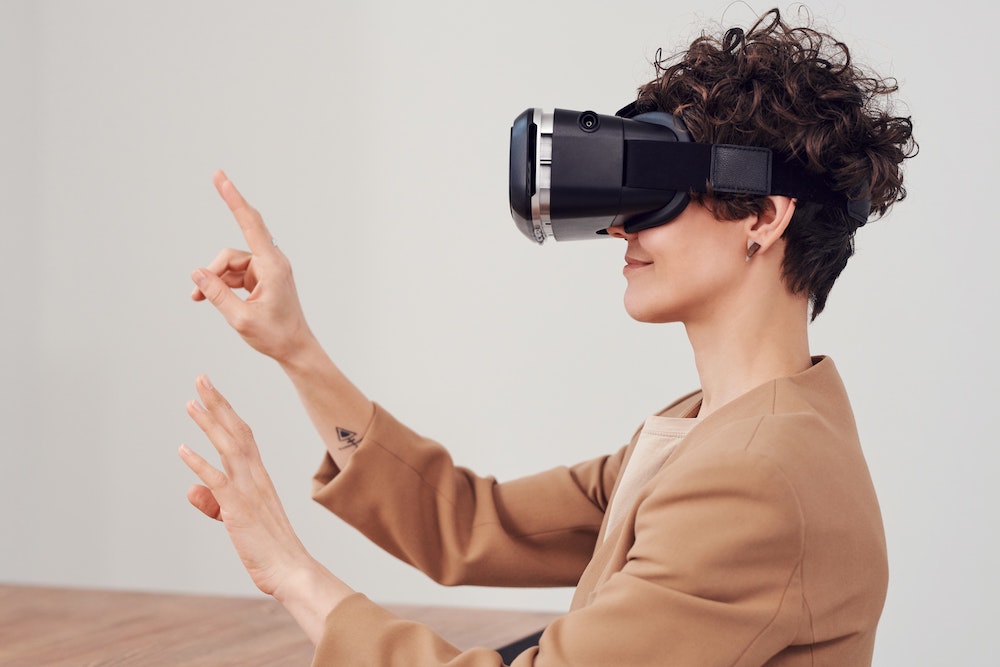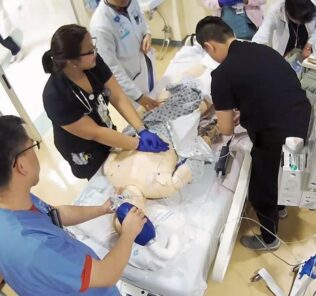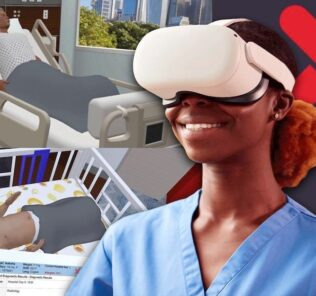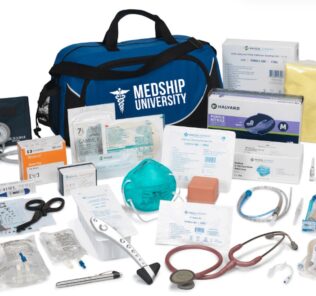How One Nursing Educator Tuned In to Virtual Reality
What is virtual reality’s benefit in the education experience for nursing students? Today, we share a submitted healthcare simulation article from Today’s article, by guest author Laurie Gelardi, DNP, CCNS, CPNP, NNP, Assistant Professor at California State University of Northridge, looks to question and answer “what is virtual reality’s benefit in the education experience for nursing students”, and “can we do better in training nurses, replacing live clinical experiences with VR to improve skills for nursing education future”?
Why Virtual Reality for Nursing Education?
Nursing students require additional practice in skills and skill-building beyond the current training provided. VR offers the opportunity for extensive training experiences with real-time feedback along with a method for tracking progress and progression. Many other disciplines have adopted this format with ongoing development and improvements. Nursing is beginning on this path.
Sponsored Content:
Being at least proficient upon practice entry is crucial for patient safety. I believe VR is the future for nursing education skill sets both for practice entry and meeting annual competencies once in practice. Simulation is significant, and it is necessary. It guides and supports capabilities, but I cannot help but feel the plastic manikin’s shallowness. “Pretend it is real,” they say, “just imagine.” Imagining mannequins are real is difficult. It is a common complaint. Yes, simulation in healthcare does have its place, but I believe there is more.
We can improve on this clinical practice experience for our students. In this regard, VR has piqued my interest. VR immerses the user in training. Immersion is known as learning at its best. While engaged, students can master subject matter quickly. It feels real as they practice their skills. I feel compelled to create this, but how? I’m a nursing educator, not a computer scientist or a gamer with extensive knowledge and experience.
Insight: Virtual Reality Creation from a Nursing Perspective
Let me start with my VR history; I have none. The VR application development has been a discovery journey from the start. I became interested in improving the skills, knowledge, and novice nursing student performance on entry into practice when I started in my role as a nursing professor. I did not see clinically prepared students upon practice entry. With increasing nursing simulation utilization in nursing programs, students should be more prepared.
Sponsored Content:
However, clinical simulation is fraught with many complications. It is resource-intensive, requiring large spaces, increased financials, human resources, and equipment. VR can be accomplished in a smaller area and does not require nearly the resources simulation does. VR provides an impressive, cost-effective, and improved learning platform with opportunity for repetitive practice to proficiency and the updatability at minimal cost in a way that simulation does not.
It’s 2018, and I see healthcare simulation usage at an all-time high. Simulation centers with experts are popping up everywhere. Nursing schools are increasing time spent in simulation, bringing new and essential student skill training, and creating advanced simulations for senior students. As clinical sites become increasingly more difficult to obtain, simulation is playing a more significant role. I am fascinated by diversifying the playing field with VR. By spring, and we have assembled a team to start the build in the summer.
Art students to recreate lab simulation space through photography and animation. Computer science to program in Unity, an educator to supply content, information, and skills. Three months in, and we have the beginnings of an application that can work. Nevertheless, much work is needed. I’ve learned a lot; it feels overwhelming, but I cannot give up.
What Was Learned About VR in Nursing
- Overcoming skepticism to gain funding is difficult
- Difficulty in finding experienced VR team
- Ensure measurability
- Immersion is critical in the VR space.
- VR project creation is time-intensive.
- Teleporting controls motion sickness and prevents injury.
We encountered challenges in securing financial support. Assembling a build team was not easy without money. My university did not have computer science faculty with VR coding experience. Coding creation is labor-intensive. Production required a small budget for a minimum viable product (MVP) to win over stakeholders. A little bit of funding was the plan, but we still did not have enough money or qualified programmers. Support through skepticism is an ongoing challenge.
The application must be measurable. As a computer program, VR can track measures using unlimited points in a simulation labs. Evaluation of measures by students in a class, a cohort, and beyond. The information guides change, supports relevance, and measures proficiency.
Experiencing immersion gives one the feeling of being in VR space. The subject removes the goggles— the mind shifts between the virtual space and physical space and time. Picking up and holding objects, touching, conversing with patients, improves the immersive experience. Creation requires preparation, planning, storyboarding, learning objectives. The environment becomes a character. Where are you? Where will you go? Choices should focus on the goals for learning for your nursing population.
Application creation requires avoidance of breaks in immersion. Sound needs realism to fit the scene. Sound production requires experience to achieve sounds expected as one moves through space. If I pick up something and drop it, a sound is associated. Proprioception sense is also essential. If seated, I must be seated in VR. If standing, I must stand in VR. The player requires reasons to explore the space such as props, investigating objects such as cabinets and drawers to obtain items. These elements keep the learner engaged.
Effective VR requires immersion, ease of use, meaningfulness (good story) adaptability (explore at your own pace), and measurability (measure resulting knowledge, success, and failure). Students do not get an adrenaline rush from a written test; this is achievable through VR experiences. Haptics improves immersion experience because the touch and feel ability can generate realism in the background.
We struggled with faculty mentors inexperienced in VR Unity build format for project development, only three students working on the project, minimal initial budget, and starting from scratch. Going forward, I have gained knowledge in progressing the development of this new amazing VR application on the cutting edge of nursing education technology is exciting. I will continue to find the unknowns and work through them every step of the way. Connect with Laurie J Gelardi here.
Next, learn more about why VR in Medicine is beginning to truly make its mark in healthcare education by checking out companies like Oxford Medical Simulation, Health Scholars, UbiSim and VRpatients!
Have a story to share with the global healthcare simulation community? Submit your simulation news and resources here!
Sponsored Content:



















